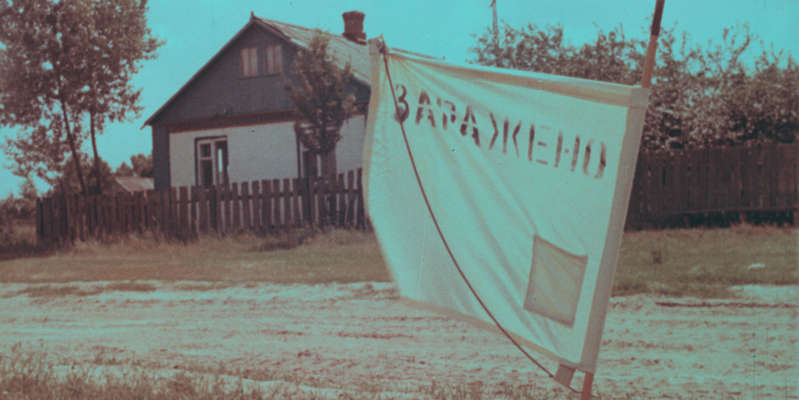
Belarusian Chernobyl: the land is alive and dead
The accident at the fourth power unit of the Chernobyl nuclear power plant occurred in about 40 seconds. The elimination of the consequences lasts 35 years. In 1986, a circle with a radius of 30 kilometers was outlined on the map around the exploded reactor. All the land that fell into this circle was considered contaminated, uninhabitable. In Belarus, it is 1,700 square kilometers – 92 settlements, of which 22 thousand people were evacuated.
Tamara Nikityuk is one of these thousands. In 1986, she lived about 20 kilometers from the Chernobyl nuclear power plant – in the village of Solnechny. The village got its name from romantic considerations: let it reach for the sun, grow and develop. He was the pride of the area. In the 1980s, a “collective farm of the future” was created here, for which an all-Union Komsomol construction project was announced. So in the usual Polesye village of Pirki, the first five-storey buildings in the entire district appeared, farms equipped with the latest agricultural technology, a House of Culture, a school, a kindergarten, shops, cafes and hairdressers. Everything so that its inhabitants – Komsomol builders and young families from neighboring villages – feel truly happy.
Tamara worked as a cook, her husband got a job as a veterinarian on a farm. The family already had two children – the eldest son is four years old, the youngest is seven months old. It was good in Solnechny. Unlike the rest of the republic, where
the era of scarcity began, there was an excellent supply of food. After all, the Chernobyl nuclear power plant is nearby, and the USSR tried to provide such facilities well. Tamara recalls that she drove away everything
disturbing thoughts.
“A relative from Kiev came to visit us and said:“ If, God forbid, something happens, you will no longer live here ”. But we didn't believe. What can happen here? ” The woman thought. The fact that an accident occurred on the night of April 25-26, 1986 was unknown in Solnechnoye. The days passed. Tamara says that she experienced some vague anxiety when she saw trains and electric trains crowded with people going from Ukraine through the local railway station. There have never been such a number of passengers on these flights. The evacuation of residents of the Ukrainian cities of Pripyat and Chernobyl took place on April 27. On the 28th, they began to resettle the Ukrainian villages located within a radius of 10 kilometers from the nuclear power plant. The population of the surrounding towns and villages saw lines of buses with evacuees. And rumors spread …
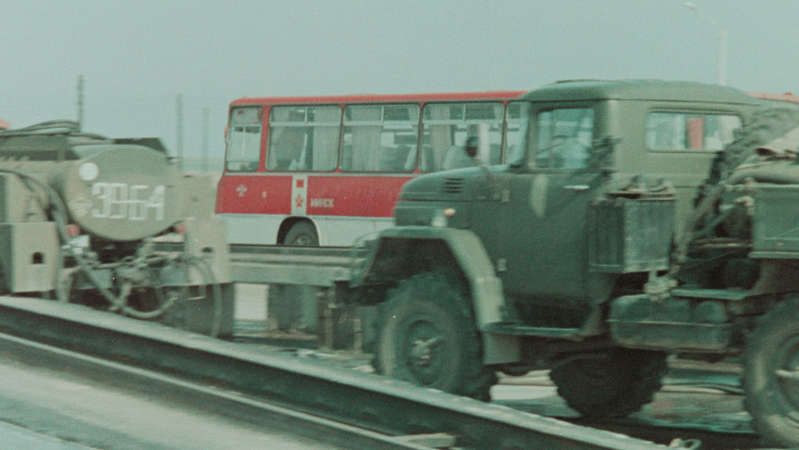
Belarusian Chernobyl: the land is alive and dead Photo: a bus for evacuating the population of the BSSR, 1986
In the absence of any intelligible explanations from the authorities, these rumors were overgrown with terrible, sometimes far from reality details. Some began to evacuate on their own, leaving for a while to stay with relatives and friends – away from the nuclear power plant. It was this stream that Tamara saw. Any information about the accident in April 1986 was sealed with a stamp “secret” and reported only to the party leadership, military and civil defense specialists. But the radioactive clouds could not be stopped and classified. When it became clear that “enemy voices” were telling about Chernobyl in the wildest colors, the party leadership ordered to inform the Soviet people about the accident. Short articles appeared in several all-Union newspapers on April 29. And on the Central Television of the USSR in the program “Time” they said that an emergency had occurred at the Chernobyl nuclear power plant, but everything was under control. The next day, the announcer on the air showed a photo of the entire station structure and announced: no giant
no destruction.
In the morning Minsk, Kiev and other cities of the USSR went to the May Day demonstration. To cancel May Day would be to admit that the situation is far from under control. Later, the head of the BSSR, Nikolai Slyunkov, claimed that he himself could only guess what happened at the Chernobyl nuclear power plant, and the Kremlin did not answer his personal inquiries. And yet, on May 3, 1986, an order came to begin the evacuation of the inhabitants of the BSSR. They began to resettle not only the 10-kilometer zone around
reactor, into which only Ukrainian territory fell, but also a 30-kilometer one, in which the BSSR and several villages of the Bryansk region of the RSFSR found themselves.
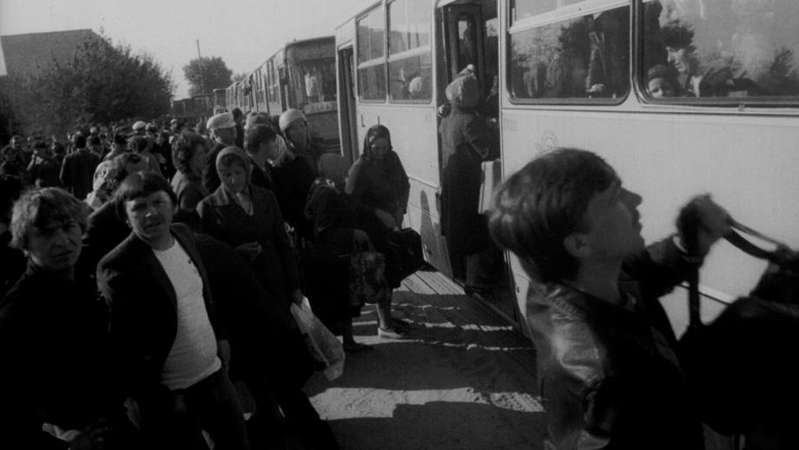
Belarusian Chernobyl: the land is alive and dead
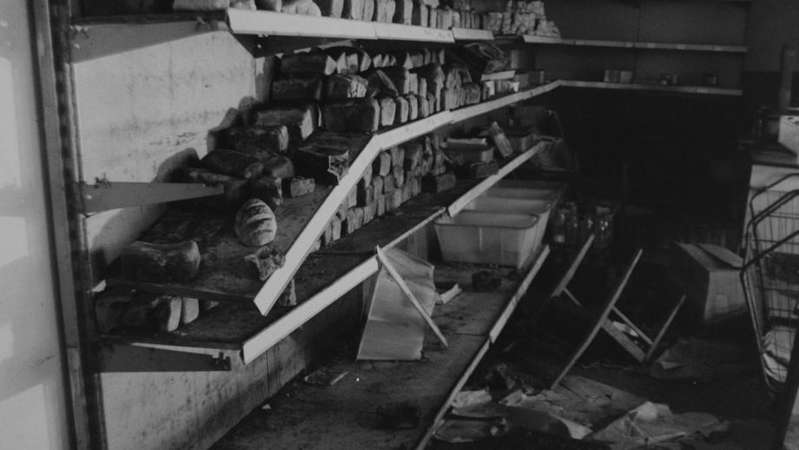
Belarusian Chernobyl: the land is alive and dead Photo: evacuation of people and an abandoned village store in the Bragin district, 1986
The plan for the evacuation of residents of the 30-kilometer zone around the nuclear power plant was invented 20 years before the accident, at the design stage of the Chernobyl nuclear power plant. Another thing is that no one expected that it would ever come to this. In theory, everything worked perfectly: the population was taken out for three days, during which time experts check the land, water and buildings for
subject of radiation damage. If necessary, they carry out decontamination of residential buildings and return local residents back. But these plans were disrupted by the scale of the accident: during the explosion of the rector, 90% of the nuclear fuel flew over Europe. At the same time, the radiation did not spread “according to plan”, but extremely unevenly. Far beyond the 30-kilometer zone, there were territories from which people had to be immediately taken out.
In Russia, the Bryansk, Kaluga, Oryol and Tula regions were affected. Although from Kaluga to Pripyat, for example, 540 kilometers in a straight line. In the BSSR, in addition to the Brest and Gomel regions bordering on Ukraine, the Mogilev region was heavily infected. One of the centers of radioactive destruction – the city of Cherikov – is located 300 kilometers from the Chernobyl nuclear power plant. Today, 1208 square kilometers of land in the Mogilev region is also an exclusion zone.
Later it turned out that in the dead, evacuated 30-kilometer zone, there are practically clean places not touched by radiation. But then, in April 1986, even experts did not understand how dangerous the water in wells and rivers is; how long you can stay in the sun; whether the plants that are eaten not only by people, but also by cows, pigs, sheep are affected. IN
in general, it was decided to evacuate all settlements without exception caught in a dangerous circle.
A local resident Igor Maksimenko recalls how the village of Gden, Bragin district, which is located 20 kilometers from the exploded reactor, was evacuated: “I was 12 years old. It was night, everyone is asleep. And suddenly rural teachers began to walk around the courtyards. They knocked on the windows, woke me up. They said that we were urgently leaving somewhere. They told me to take a spoon, a mug and a pillow for each, documents, money. ”
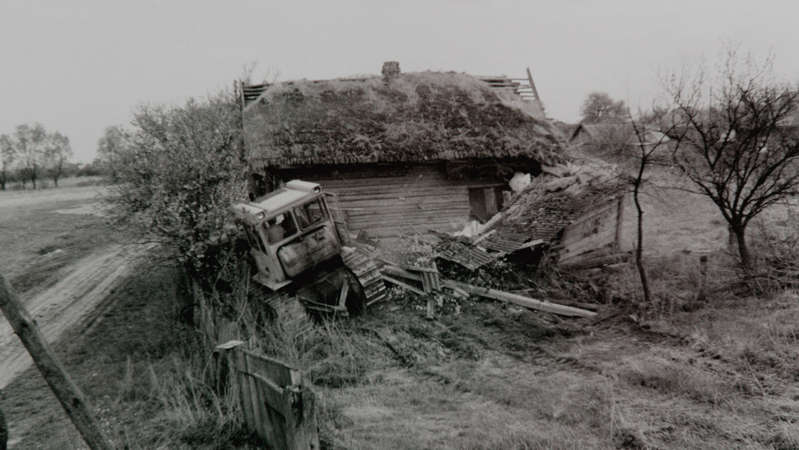
Belarusian Chernobyl: the land is alive and dead Photo: “Burial” of a house in the Bragin district, 1986
Igor remembers that he saw in the village either the military, or the policemen – strangers, non-local. He remembers how collective farmers loaded cows, horses, poultry into cars, how they themselves loaded onto buses. Maybe because it all happened at night, Igor felt an inexplicable horror. In the morning, collective farmers from Gden – about 700 people –
arrived in Bragin – 70 kilometers away. Someone was settled in apartments in the city, someone was taken further along the farms. The families of the evacuees were received by local residents.
Meanwhile, in the village of Solnechny and the village of Pirki – literally 10-15 kilometers from Gden – Tamara Nikityuk and her family, neighbors and friends celebrated Easter. That year, the holiday fell on May 4. The weather was fine. Children and adults were on the street all day, someone even went to sunbathe on the nearest river. On this very day, a radioactive cloud covered almost all the Nordic countries, and the international community, connecting all
organizations, began to demand reliable information from the USSR: what happened at the Chernobyl nuclear power plant. The Soviet Union broke the silence: it had already become clear that this time there would not be an easy victory over the atom. On May 14, 1986, General Secretary of the CPSU Central Committee Mikhail Gorbachev made an appeal to the people about the Chernobyl accident.
By this time, the entire 30-kilometer affected area had already been resettled, including the village of Solnechny. Tamara Nikityuk recalls that the day after Easter, red ikarus were lined up at the school. All children with their mothers
I was put on buses and taken to the city of Mozyr. They announced: we are going only for three days, we don’t need to take anything with us, only documents and some money. Tamara took a bottle of milk for her nursing youngest son:
“On the way, we saw the military, some cars, it became scary. Then they stopped at the checkpoint, began to wash the buses with a foamy solution. And they dropped us off and took us to some kind of bathhouse, where they told us to take off all our clothes, and they also began to pour water over us. Here panic began: there was a scream, crying … The water was cool, and I said that I would not let a seven-month-old baby douse. No matter how they tried to persuade, she did not give in. Then they checked us with dosimeters, gave us clothes that had been treated with something, and took us away again … ”
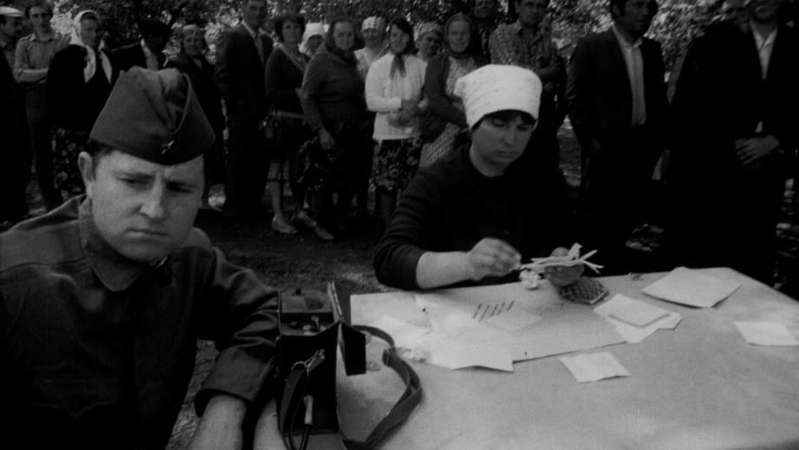
Belarusian Chernobyl: the land is alive and dead Photo: measurement of the level of radiation among the population in the Bragin district, 1986
A few days later, Tamara was in the hospital with the children: her sons were affected by severe stress, the road, milk sour in the heat on the bus. Then her evacuated husband came for her, and the family moved to relatives in Ukraine. Today Tamara Nikityuk lives in the village of Krasnoe – literally 15 kilometers from her former home in Solnechny. Only now you can't just get into Sunny now. Already in 1988, the Belarusian disaster zone was partially surrounded by barbed wire with an alarm. On the territory of the three most affected districts of the Gomel region – Braginsky, Khoiniki and Narovlyansky – the Polessky radiological reserve has appeared. It was assumed that people would never come back here. So that it would definitely not occur to them, it was decided to literally “bury” some villages. For example, out of 53 settlements of the Bragin region, in nine houses were completely demolished, the debris and all the property of local residents were buried in the ground.
They did not demolish the sunny, but today all the houses are ravaged to the ground. Who did it and when is not known. Someone claims that this is the work of marauders. In the early 1990s, the zone was somehow guarded, and everything was taken out from here with whole KamAZ trucks. In the entrances, literally everything has been taken out, from doors to stair railings, and even plumbing and
broken window frames. Today, when all the circumstances of the accident were clarified and the maps of defeat were declassified, it became clear: the village was in vain abandoned to the mercy of fate.
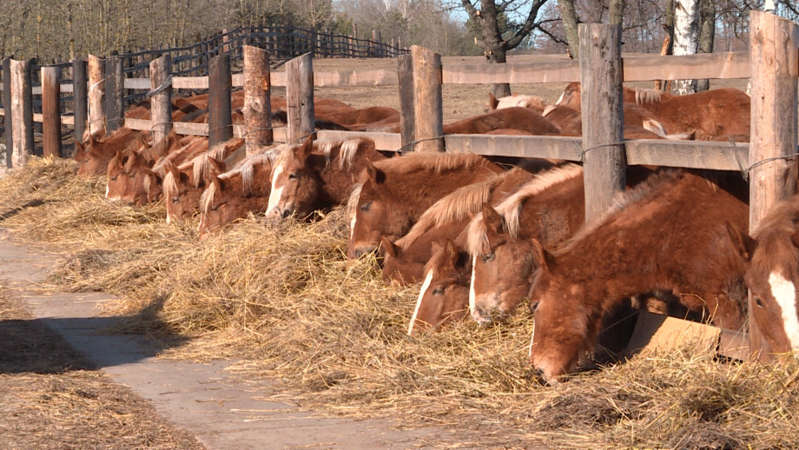
Belarusian Chernobyl: the land is alive and dead Photo: measurement of the level of radiation among the population in the Bragin district, 1986
Near Solnechny, only on the other side of the zone fence, there are residential villages. There is a horse farm where heavy trucks are grown, pastures are sown with fodder grasses. And 25 kilometers away there is a livestock complex where cattle are kept. Milk and meat are checked with particular care: Belarus has one of the most stringent radiological standards for food products. If there is even the slightest doubt about the quality, agricultural products are used only for technical needs.
In the first years after the disaster, 54 collective and state farms were liquidated in the contaminated territory of Belarus, and nine food factories were closed. More than 264 thousand hectares were excluded from agricultural circulation. But today about 15 thousand hectares of land have been brought back to life. Reclamation of the “Chernobyl” territories began in the early 2000s.
The state program for the revival of these lands continues now. The “self-settlers” proved that it is possible to live and grow crops on this land. This was the name of those who either refused to evacuate at all (there were only a few of them), or returned home from the evacuation.
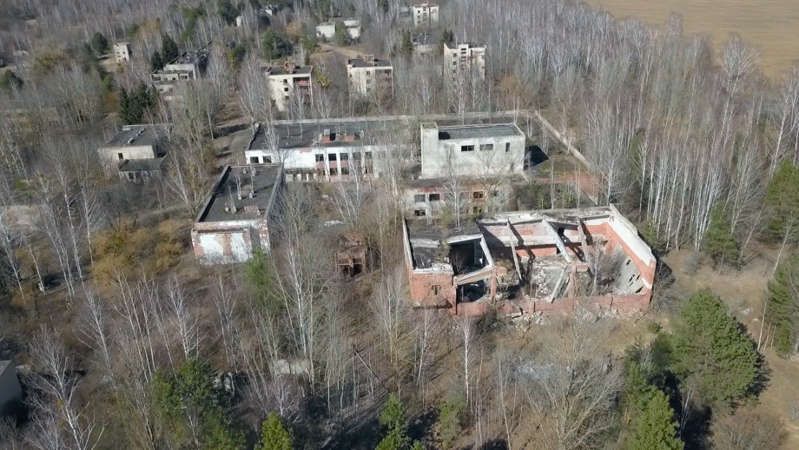
Belarusian Chernobyl: the land is alive and dead Photo: the village of Solnechny, 2021
So, tired of living in other people's houses, collective farmers from the village of Gden did. In September 1986, almost the entire population returned to their homes: “At first we lived without electricity. The light was not given for a long time. The bosses came, people argued, argued. Then the military came, measured the radiation here and said that we were clean. So we stayed. Then everyone was given documents, the collective farm was excluded from the zone. “
The “enclave” among the 30-kilometer resettlement zone may have accidentally turned out to be safe for living, but now Belarus already has a unique experience of how to revive and develop this land, so that not a hectare on which to live will be lost in the end.

